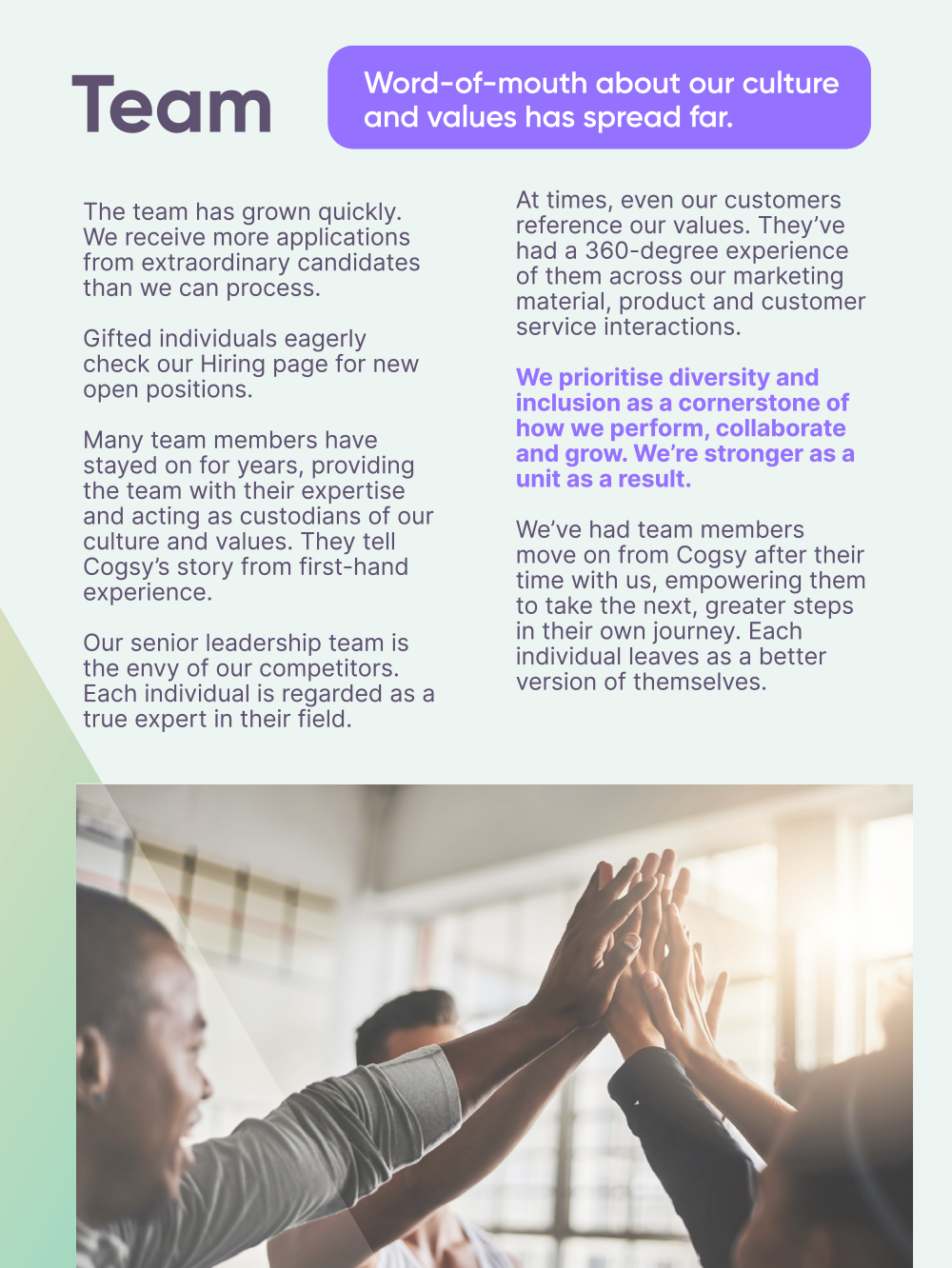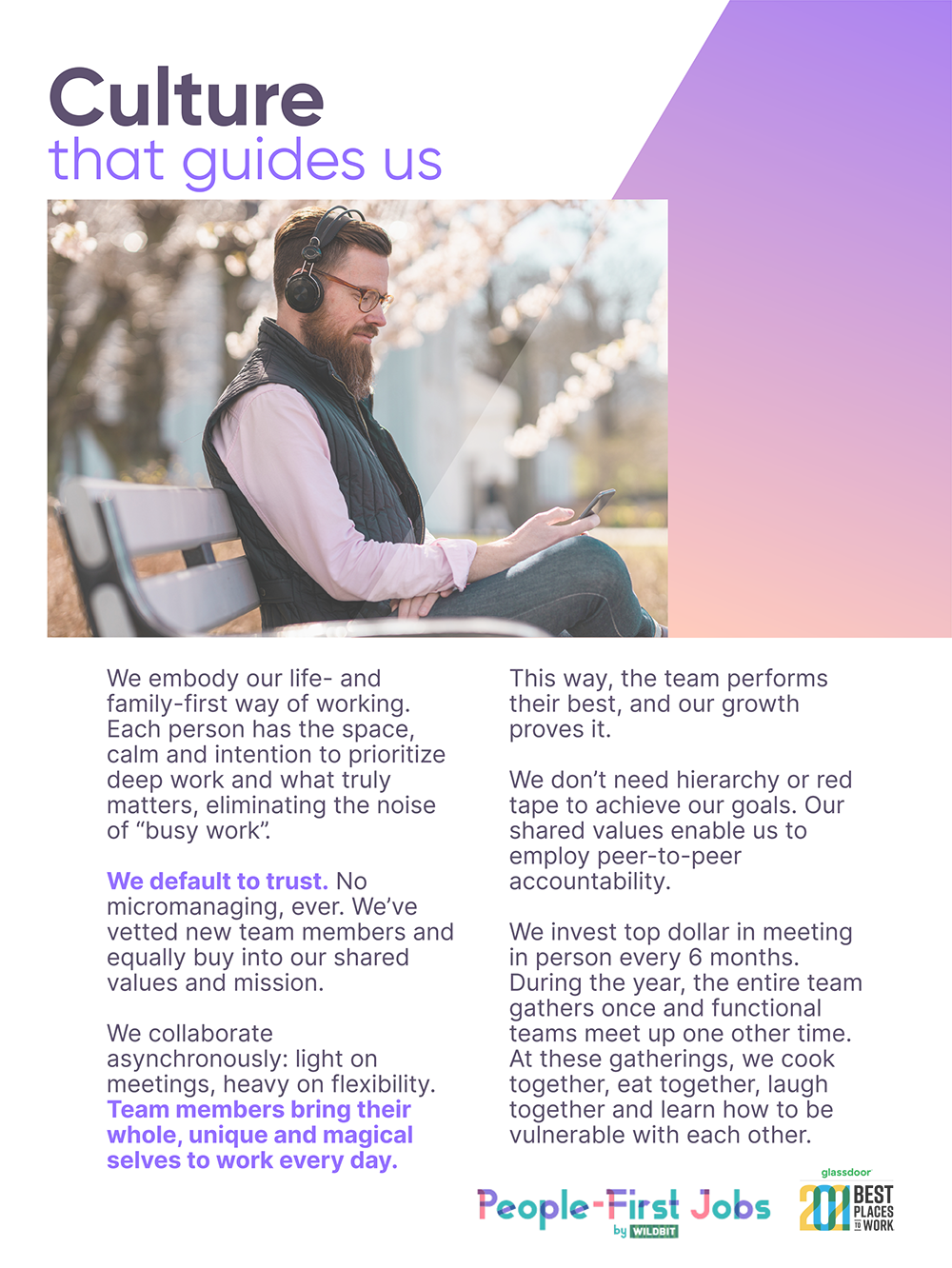All of us face a similar bottleneck in scaling our ideas and efforts: our time - and energy - is ultimately finite.
Yes, in recent years we've seen an incredible surge of talented, smart individuals joining the "creator economy". And many of them have achieved an incredible amount of success (measured in whatever way you'd like). The majority (if not, all) of those creators have however leveraged something (whether it is software or a freelancer) to help them scale.
One of the primary reasons I chose to work on Cogsy, was to enable me to build out a team and work with incredible individuals. (And I've been fortunate enough to get to this very early in our journey, having tripled our team size at the end of last year.)
Regardless of how one structures one's engagement with other humans (whether they're full-time employees, freelancers or consultants that are part of another team or business), I'd argue that it is rarely possible to achieve material scale in one's ideas or pursuits without collaborating with other humans in some way.
This unattributed quote comes to mind:
“If you want to go fast, go alone. If you want to go far, go together.”
Maybe it is because I cut my teeth as an entrepreneur in the open-source world of WordPress, where even one's direct competitors were ultimately frenemies. It wasn't a zero-sum game. And a rising tide lifted all boats.
What I knew from the earliest days in Cogsy was that I wanted to be even more intentional and thoughtful about how we would build the team. And I wanted to be a different, better leader too.
For starters, Stefano (my co-founder) joined me on the journey. He was my previous team member at Conversio and a big contributor to the life- and family-first culture that we created there (and which inspired my book, Life Profitability).
Much of this has manifested in a few core principles that we now apply in our team:
- Of all our values, empowerment is the one that stands out to me. When we can empower the unique, magical individuals on our team to be their best selves, they're highly likely to do great work.
- Talented, smart team members don't need to be told what to do. They only need to be pointed in a direction, given resources and supported to figure out how to help get the team (and company) to its stated goals.
- Setting the initial mission, vision, culture and values is a top-down activity. Once you have that first version, the team will take it, run with it and evolve it over time. The key here is to always make the implicit, explicit. What lingers in the shadows benefits no one (and maybe even be harmful).
Tactically one of the best things we have done is set our Vivid Vision (based on this book by Cameron Herold), which is a colourful narrative of where Cogsy will be in 3 years. This is a guidebook for how we interact and operate internally. But I've also recently seen how beneficial it is to share it with prospective hires.
Here are two example pages from the greater document that relates to our team and culture:


This narrative creates a certain alignment and clarity that has also empowered me to publish our ideas with conviction, passion and even a bit of bravado:
We're reimagining how retail / DTC brands do planning, run operations and ultimately take (the best) action.
— adii (@adii) February 15, 2022
This soon-to-ship feature entirely transforms how founders and operators are using @cogsyapp today. Let me explain 👇 pic.twitter.com/Ea8Ix9GDrb
We know where we're going and that we have an incredible team that absolutely will get us there. The only minor uncertainties are the exact activities that will get us there and how long that will take.
Last Friday, I sat down with a glass of wine to listen to the latest episode on the Cogsy podcast: How Cogsy’s Calm, People-First Workplace Triggers Culture Shock (The Good Kind).
This was an episode recorded by Marcella (Head of Marketing) and Bori (Head of People). And most importantly, neither Stefano nor myself was involved in this.
We didn't script it. We didn't schedule it. We didn't even know beforehand that it was going live.
Give it a listen:
Why does this matter?
I was listening to this episode with a smile. In that conversation, we had two of the leaders on our team talk about our culture, values and their own experiences with it.
None of it was quoted verbatim from our Vivid Vision, marketing website or any other internal artefact. And the conversation had no agenda beyond sharing our ideas on how we work at least. (Yes - if it inspires others and/or attracts amazing individuals to the team, that is a bonus that we would happily accept.)
I believe the only way that this could happen is because every individual on our team has been empowered to be their true, whole selves and that we have equipped them with a clear understanding of our mission, vision, culture and values.
Doing this changes the dynamic of leadership completely.
Stefano & I can now be more like coaches, connectors and accountability partners. We don't have to make all of the best decisions ourselves; we just need to facilitate great decision-making.
We've empowered a team and we mostly just need to get out of their way so that they can do great work.
